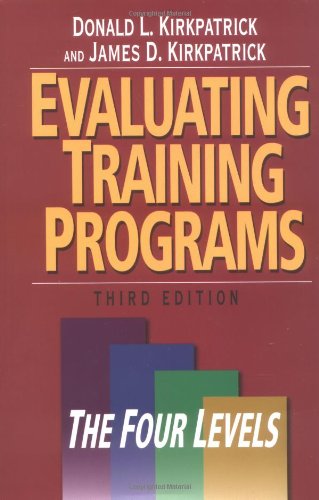Evaluating Training Programs: The Four Levels pdf download
Par smith chester le lundi, août 15 2016, 04:27 - Lien permanent
Evaluating Training Programs: The Four Levels by Donald L Kirkpatrick


Evaluating Training Programs: The Four Levels Donald L Kirkpatrick ebook
ISBN: 1576753484,
Page: 399
Publisher: Berrett-Koehler Publishers
Format: pdf
Kirkpatrick established a change in the trainee's performance. Evaluation of training means measuring the effectiveness of a training program. The Kirkpatrick Model for evaluating training programs is the most widely used approach in the corporate, government, and academic worlds. My article was “Donald L Kirkpatrick's training evaluation model – the four levels of learning evaluation”, which talked about the evaluation theories of Donald L Kirkpatrick's, Professor Emeritus, University Of Wisconsin. More detail Check Price Now !!! Cyber Monday Sales Evaluating Training Programs: The Four Levels (3rd Edition) Black Friday. Creating and Demonstrating Value. Recognize Business Challenges Facing Training Stakeholders; Recall Key Principles of Training Evaluation; Differentiate the Four Levels of Evaluation. Filed Under (program evaluation) by englem on 27-10-2010 and tagged formative, summative. Perhaps the best know training methodology is Kirkpatrick's Four Level Evaluation Model. Paraprofessionals known as Program Representatives provide the day-to-day operations for programming at the local level. I feel that these four criteria are good places to evaluate the success of a training program, especially when the training programs are administered in a business/workplace environment. Level 1 – Reaction As the word implies, evaluation at this level measures how those who participate in the program react to it. Donald Kirkpatrick wrote about what became known as the Kirkpatrick model – where you evaluate training in four levels: reaction, learning, behavior and results. Kirkpatrick (1959) developed a four level model used primarily for evaluating training.